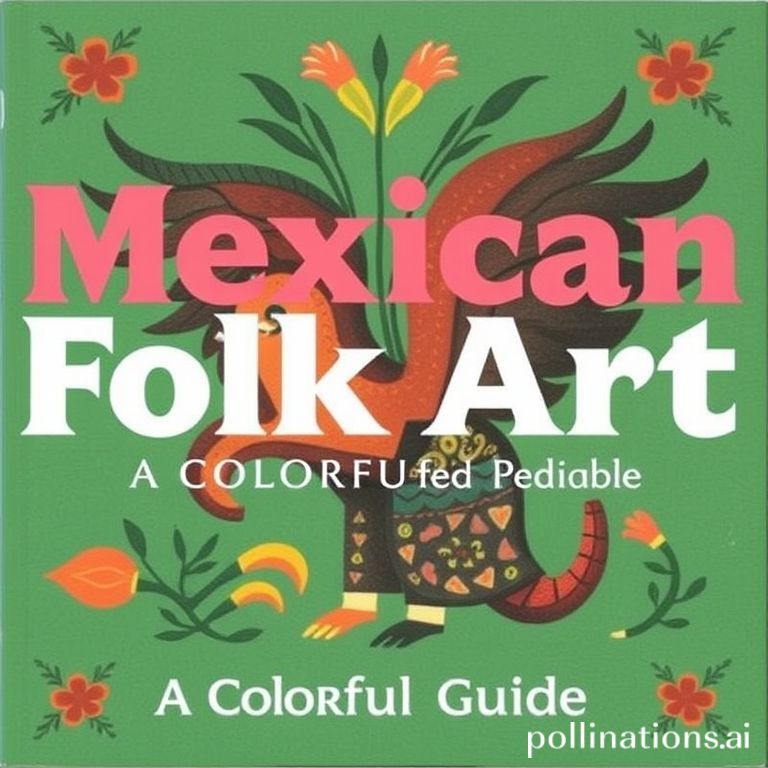Mexico is a country celebrated for its vibrant culture, rich history, and stunning landscapes. But beyond its famous beaches and ancient ruins lies a treasure trove of artistic expression: Mexican folk art. This art form, deeply rooted in tradition and often passed down through generations, offers a window into the soul of Mexico. From the whimsical creatures of Oaxaca to the intricate pottery of Puebla, each piece tells a story.
In this guide, we’ll explore some of the most iconic and beloved forms of Mexican folk art, uncovering their origins, symbolism, and the incredible artisans who keep these traditions alive. Whether you’re an art enthusiast, a traveler planning a trip to Mexico, or simply curious about different cultures, prepare to be captivated by the beauty and artistry of Mexican folk art.
Discovering the Magic of Alebrijes
Perhaps one of the most recognizable forms of Mexican folk art, alebrijes are brightly colored, fantastical creatures born from the imagination. These whimsical figures are typically made from copal wood and painted with intricate patterns and vibrant hues. The tradition of alebrijes originated with Pedro Linares López, a cartonero (cardboard sculptor) from Mexico City. In the 1930s, while ill, Linares had vivid dreams of bizarre, hybrid animals, and upon recovering, he began recreating them in cardboard.
The Oaxaca Connection
While Pedro Linares López is credited with the creation of alebrijes, the Oaxacan towns of San Martín Tilcajete and Arrazola have become renowned centers for their creation in wood. Here, families have passed down the craft for generations, each adding their unique style and artistic flair. The process of creating an alebrije is painstaking, involving carving the wood, letting it dry, and then painting it with intricate details.
- Alebrijes often represent a fusion of different animals, both real and imagined.
- The vibrant colors and patterns are not just decorative; they often carry symbolic meanings rooted in indigenous beliefs.
- When purchasing an alebrije, consider supporting the artisans directly by buying from them in their workshops or at local markets.
The Symbolic Trees of Life
Árboles de la vida, or Trees of Life, are another iconic form of Mexican folk art. These ceramic sculptures depict the biblical story of creation, but over time, they have evolved to represent a wide range of themes, including family history, cultural traditions, and even personal narratives. The Trees of Life are primarily associated with the town of Metepec, located near Mexico City, where families have been creating them for centuries.
A Tapestry of Stories
Each Tree of Life is a unique work of art, reflecting the individual creativity of the artisan. The central theme is often the Garden of Eden, with Adam and Eve, the serpent, and various animals. However, contemporary Trees of Life may incorporate elements of Mexican culture, such as depictions of Day of the Dead celebrations, traditional occupations, or even modern-day events.
- The Tree of Life is a powerful symbol of life, growth, and interconnectedness.
- The colors and symbols used in the Trees of Life often carry specific meanings. For example, birds may represent freedom, while flowers symbolize beauty and fertility.
- Look for Trees of Life that resonate with you personally, whether it’s the colors, the symbols, or the overall theme.
Beyond Alebrijes and Trees: Exploring More Mexican Folk Art
While alebrijes and Trees of Life are perhaps the most well-known forms of Mexican folk art, there’s a vast and diverse world to explore. Each region of Mexico has its own unique traditions and artistic specialties. From the talavera pottery of Puebla to the intricate beadwork of the Huichol people, the variety is truly astounding.
Other notable examples include:
- Talavera Pottery: Originating in Puebla, this type of pottery is characterized by its distinctive blue and white designs, often depicting scenes from Mexican history and culture.
- Huichol Beadwork: The Huichol people of western Mexico are renowned for their intricate beadwork, which is used to decorate everything from masks to bowls. The designs often incorporate symbols and imagery from their religious beliefs.
- Barro Negro Pottery: This black clay pottery from Oaxaca is known for its unique sheen, which is achieved by polishing the clay before firing.
- Textiles: From the colorful serapes of Saltillo to the intricately embroidered blouses of Chiapas, Mexican textiles are a vibrant expression of cultural identity.
Conclusion
Mexican folk art is more than just decorative objects; it’s a living testament to the country’s rich cultural heritage and the creativity of its people. By exploring these diverse art forms, we gain a deeper understanding of Mexican history, traditions, and beliefs. Whether you’re admiring the whimsical alebrijes, contemplating the symbolism of the Trees of Life, or discovering the unique artistry of a particular region, Mexican folk art offers a journey of discovery and appreciation.
If you enjoyed this article, don’t forget to explore more inspiring stories on Life in Mexico!
IMAGE: A vibrant and colorful display of Mexican folk art. In the foreground, several intricately painted alebrijes (fantastical creatures) made of wood are arranged. Behind them, a large “Tree of Life” ceramic sculpture stands tall, adorned with flowers, animals, and figures representing various aspects of Mexican culture. The background is a blurred image of a traditional Mexican market with stalls overflowing with textiles, pottery, and other handicrafts. The overall mood is joyful and celebratory, with warm, inviting lighting. The style is realistic but with a touch of whimsy to capture the fantastical nature of the art.


